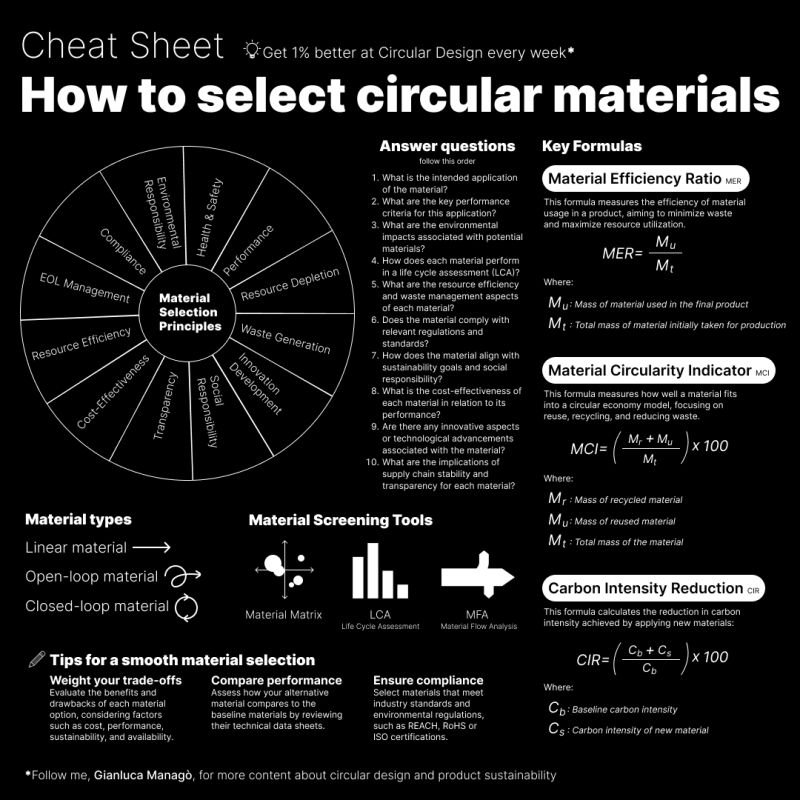When someone asks, “How do you select circular materials?” and your response is, “We are already using recycled plastic,” it’s time to take a step back and reconsider. While using recycled materials is a commendable first step, it’s merely the beginning of a much broader journey. True circularity demands a deeper dive into the heart of your material strategy. ❌ Refer Gianluca ManagòGianluca Managò post for cover picture details
Imagine a world where every material choice you make not only reduces waste but also enhances the overall sustainability and performance of your projects. This is the world of true circularity, and it starts with asking the right questions:

💡 What are the Core Pillars of Your Project? Every project has unique goals and priorities. To navigate the complex landscape of material selection, start by identifying your three core pillars—those high-priority principles that are non-negotiable. These could be anything from environmental impact to cost-effectiveness. Next, choose three sub-pillars that are important but can be more flexible. This framework will guide your decision-making and ensure that your choices align perfectly with your project’s critical objectives.
💡 How Do You Balance Your Criteria? No material is perfect, and trade-offs are inevitable. But with clear priorities in hand, you can make informed decisions that strike the right balance between performance, circularity, and cost. Understanding where you can compromise and where you must stand firm allows for a more strategic approach. This isn’t just about picking the cheapest or the most sustainable option; it’s about finding the sweet spot that meets all your needs without sacrificing your core values.
💡 How Do You Make Data-Driven Decisions? In a world filled with buzzwords and greenwashing, it’s crucial to ground your choices in solid data. Apply specific, quantifiable metrics to evaluate the performance, sustainability, and cost-effectiveness of each material. This ensures that your decisions are objective and transparent, based on hard facts rather than assumptions. By doing so, you can confidently defend your choices and demonstrate their positive impact.
By addressing these questions, you can move beyond the surface-level use of recycled materials and embrace a holistic strategy for circular material selection. This approach not only reduces waste but also drives innovation, enhances performance, and creates a more sustainable future.
Let’s push the boundaries of what’s possible and make choices that truly drive positive environmental and economic impact. It’s time to design with purpose and lead the way toward a circular economy.
Ready to transform your approach to material selection? 📌
- Save this post to reference later.
- Repost it to spread the message.
- Start implementing these principles today.
➡ Want to dive deeper? Get in touch and be part of the change!
#CircularMaterials #Sustainability #ZeroWaste #Recycling #EcoFriendly #GreenDesign #CircularEconomy #Environment #ClimateChange #Innovation #DesignWithPurpose

